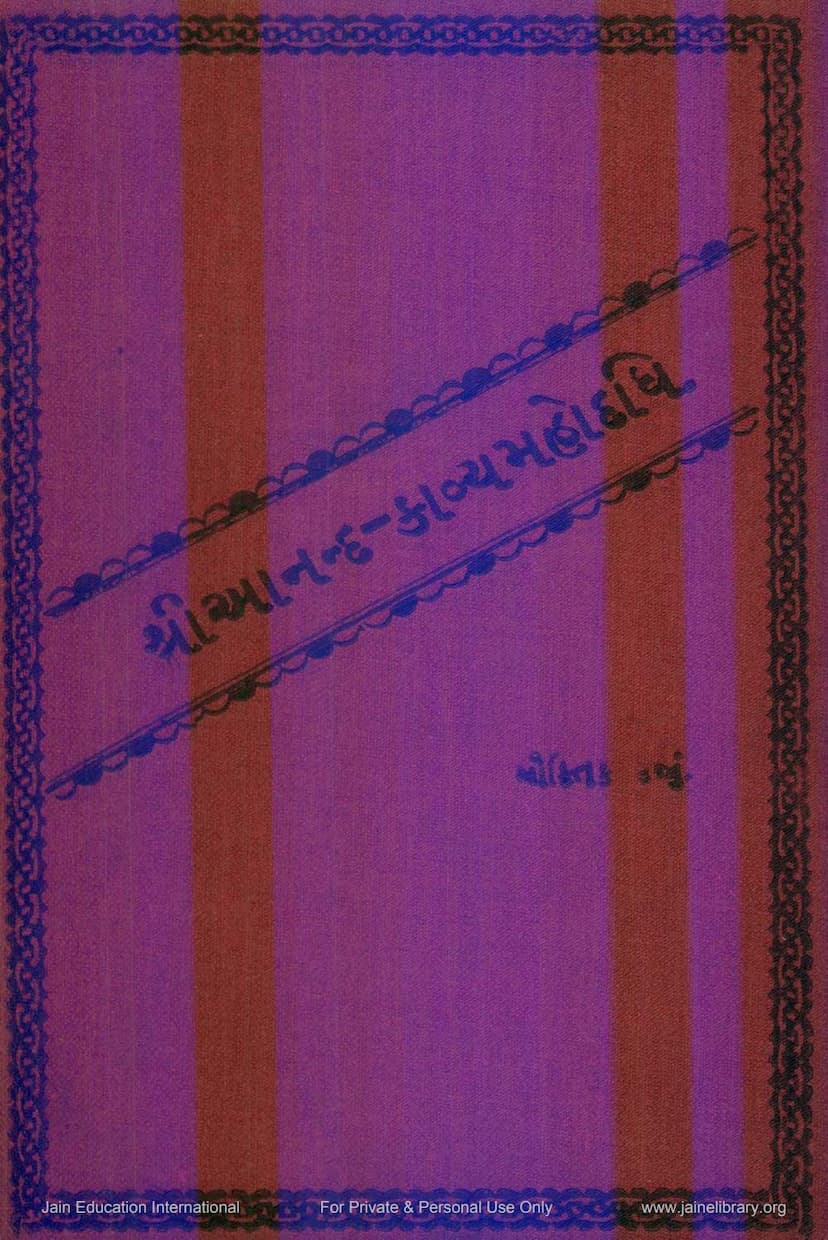Anand Kavya Mahodadhi Part 3
Added to library: September 1, 2025

Summary
The provided text is the third part of the "Anand Kavya Mahodadhi," a collection of ancient Gujarati Jain poems compiled and researched by Jivanchand Sakerchand Javeri. Published in 1914 by the Sheth Devchand Lalbhai Jain Pustakoddhar Fund in Bombay, this volume focuses on "Rasas" (narrative poems) by various Jain monks and poets.
The collection is dedicated to the memory of Sheth Devchand Lalbhai Javeri. The introduction emphasizes the significant contribution of Jains to Gujarati literature and laments the lack of timely publication efforts for their ancient manuscripts. It highlights the value of these "Rasas" for providing religious knowledge through stories and their importance for understanding the history, evolution, and vocabulary of the Gujarati language.
The book contains the following six Rasas, each exploring different themes:
- Bharat Bahubali Ras: Explores the theme of bhava-yuddha (internal struggle or passion versus spiritual discipline).
- Jayanand Kevali Ras: Focuses on the theme of vrata (vow) or adherence to religious principles.
- Vachharaj Devraj Ras: Deals with the theme of jivdaya (compassion towards living beings).
- Sursundari Ras: Highlights the themes of shil (chastity) and the glory of the Navkar Mahamantra.
- Nal Damyanti Ras: Explores themes of tapas (asceticism) and shil (chastity).
- Haribal Machhi Ras: Centers on the themes of tapas (asceticism) and daya (compassion).
The text delves into the linguistic and historical aspects of Gujarati literature, noting the Jain contribution to its development from the 12th-13th century onwards. It discusses the various influences on the language within these poems, including Gujarati, Magadhi, Shuraseni, Apabhramsa, Prakrit, Marwari, and Hindi. The editor also touches upon the script variations and the practice of adding anusvars (nasalization marks) by scribes, which sometimes led to confusion in identifying the original language.
The Rasas themselves are presented with detailed explanations of their authorship, the historical context of the poets, and the specific philosophical or ethical concepts they aim to convey. The compilation showcases the richness and diversity of Jain narrative poetry, its contribution to Gujarati literary heritage, and its enduring relevance for spiritual and linguistic study.